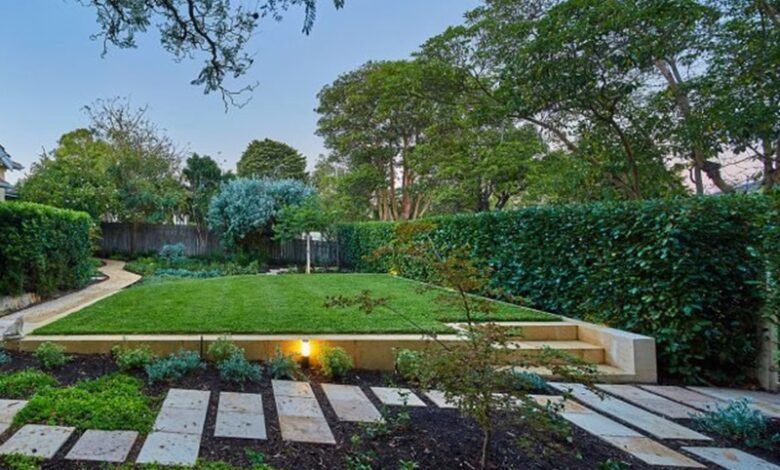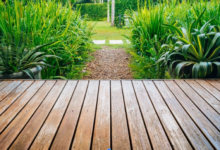Australian Grass Landscaping: Ideas for a Lush Yard

Selecting the appropriate grass species for your yard is a critical first step in establishing a thriving landscape. The choice of grass can significantly influence not only the aesthetic appeal of your outdoor space but also its resilience to local climate conditions, soil types, and intended use. In Australia, where diverse climates range from tropical in the north to temperate in the south, understanding the specific requirements of various grass species is essential.
For instance, warm-season grasses such as Couch (Cynodon dactylon) and Buffalo (Stenotaphrum secundatum) are well-suited for the hotter regions, thriving in full sun and exhibiting drought resistance. Conversely, cool-season grasses like Fescue (Festuca spp.) and Ryegrass (Lolium spp.) perform better in cooler areas, offering lush green lawns during the winter months. When selecting grass, it is also vital to consider the intended use of the lawn.
For high-traffic areas, such as play zones for children or spaces for pets, durable varieties like Kikuyu (Pennisetum clandestinum) may be ideal due to their rapid growth and ability to recover quickly from wear. On the other hand, if the goal is to create a serene, ornamental lawn for aesthetic enjoyment, finer-textured grasses like Zoysia Australis can provide a lush appearance while requiring less frequent mowing. Additionally, soil testing can help determine pH levels and nutrient content, guiding you toward species that will thrive in your specific conditions.
By carefully evaluating these factors, homeowners can make informed decisions that lead to a vibrant and sustainable grass landscape.
Creating a Low-Maintenance Grass Landscape
Designing a low-maintenance grass landscape is an appealing option for many homeowners who wish to enjoy a beautiful yard without the burden of extensive upkeep. One effective strategy is to select drought-tolerant grass species that require less water and are more resilient to dry conditions. For example, native Australian grasses such as Kangaroo Grass (Themeda triandra) are not only visually striking but also adapted to local climates, making them an excellent choice for low-maintenance lawns.
These grasses typically require less fertilization and are more resistant to pests and diseases, reducing the need for chemical treatments. In addition to choosing the right grass species, implementing smart landscaping practices can further minimize maintenance efforts. For instance, incorporating mulch around garden beds can help retain soil moisture and suppress weeds, reducing the need for frequent watering and weeding.
Moreover, designing your lawn with natural contours can facilitate better drainage and prevent water pooling, which can lead to disease in grass. Utilizing ground covers or ornamental grasses in areas where traditional turf may struggle can also enhance the landscape while reducing mowing requirements. By combining thoughtful plant selection with practical landscaping techniques, homeowners can create a stunning yet low-maintenance grass landscape that enhances their outdoor living experience.
Incorporating Native Australian Plants into Your Grass Landscape
Integrating native Australian plants into your grass landscape not only enhances biodiversity but also creates a harmonious environment that reflects the natural beauty of the region. Native plants are well-adapted to local conditions, requiring less water and maintenance compared to exotic species. For instance, incorporating plants like the Australian Bush Tomato (Solanum centrale) or the native Bluebell (Wahlenbergia spp.) alongside your grass can provide vibrant color and texture while attracting local wildlife such as birds and beneficial insects.
This approach fosters sustainable Australian gardens that feature a balanced ecosystem that supports pollinators and other fauna essential for a healthy garden. Furthermore, native plants can serve functional purposes within a grass landscape. For example, using low-growing native shrubs as borders or accents can help define spaces while providing habitat for small creatures.
Additionally, these plants often have deep root systems that improve soil structure and prevent erosion, contributing to overall landscape health. When planning your garden layout, consider creating zones where native plants can thrive alongside your chosen grass species. This not only enhances visual interest but also promotes ecological sustainability by reducing reliance on irrigation and chemical fertilizers.
By thoughtfully incorporating native Australian plants into your grass landscape, you create a vibrant and resilient outdoor space that celebrates the unique flora of the region.
Using Grass to Define Outdoor Living Spaces
Grass can play a pivotal role in defining outdoor living spaces, creating distinct areas for relaxation, recreation, and social gatherings. By strategically using grass as a natural boundary or transition between different zones, homeowners can enhance the functionality of their yards while maintaining an aesthetically pleasing environment. For instance, a lush expanse of grass can serve as a soft carpet leading from a patio area to a fire pit or outdoor dining space, inviting guests to move seamlessly between areas while enjoying the comfort of a well-manicured lawn.
In addition to serving as a visual separator, grass can also be utilized to create functional outdoor spaces tailored to specific activities. For example, a designated play area for children can be established with durable grass species that withstand heavy foot traffic while providing a safe surface for play. Similarly, incorporating pathways made of grass pavers or stepping stones can guide visitors through the landscape while allowing for easy maintenance of the lawn.
By thoughtfully designing these outdoor living spaces with grass as a central element, homeowners can cultivate an inviting atmosphere that encourages outdoor enjoyment and social interaction.
Maintaining a Healthy and Lush Grass Landscape
To achieve and maintain a healthy and lush grass landscape, regular care and attention are essential. One of the most critical aspects of lawn maintenance is proper watering practices. Understanding the specific water needs of your chosen grass species is vital; for instance, warm-season grasses typically require less frequent watering than cool-season varieties.
Implementing deep watering techniques encourages deeper root growth, which enhances drought resistance and overall lawn health. Additionally, utilizing rainwater harvesting systems or drip irrigation can promote sustainable practices while ensuring your lawn receives adequate moisture. Fertilization is another key component in maintaining vibrant grass.
Conducting soil tests can help determine nutrient deficiencies and guide appropriate fertilization schedules. Organic fertilizers or slow-release options are often recommended as they provide nutrients gradually without overwhelming the grass with excess chemicals. Regular mowing at the correct height is also crucial; cutting too short can stress the grass and lead to weed invasion while allowing it to grow too long may result in thatch buildup.
By adhering to these maintenance practices—proper watering, fertilization, and mowing—homeowners can cultivate a lush and healthy grass landscape that remains resilient throughout changing seasons.
Enhancing Your Grass Landscape with Creative Design Features
Enhancing your grass landscape with creative design features can elevate its visual appeal and functionality significantly. One popular approach is to incorporate decorative elements such as garden beds or raised planters filled with colorful flowers or native plants. These features not only add texture and color but also create focal points that draw the eye across the landscape.
Curved pathways made from natural stone or gravel can meander through grassy areas, providing an inviting route while breaking up large expanses of lawn. Another innovative way to enhance your grass landscape is by integrating water features such as ponds or fountains. The sound of flowing water adds tranquility to outdoor spaces while attracting wildlife like birds and butterflies.
Additionally, installing lighting elements such as solar-powered garden lights or string lights can create an enchanting atmosphere during evening gatherings. These design features not only enhance the aesthetic quality of your yard but also encourage outdoor living by creating inviting spaces for relaxation and entertainment. By thoughtfully incorporating creative elements into your grass landscape, you can transform your yard into a captivating oasis that reflects your personal style and enhances your outdoor experience.






